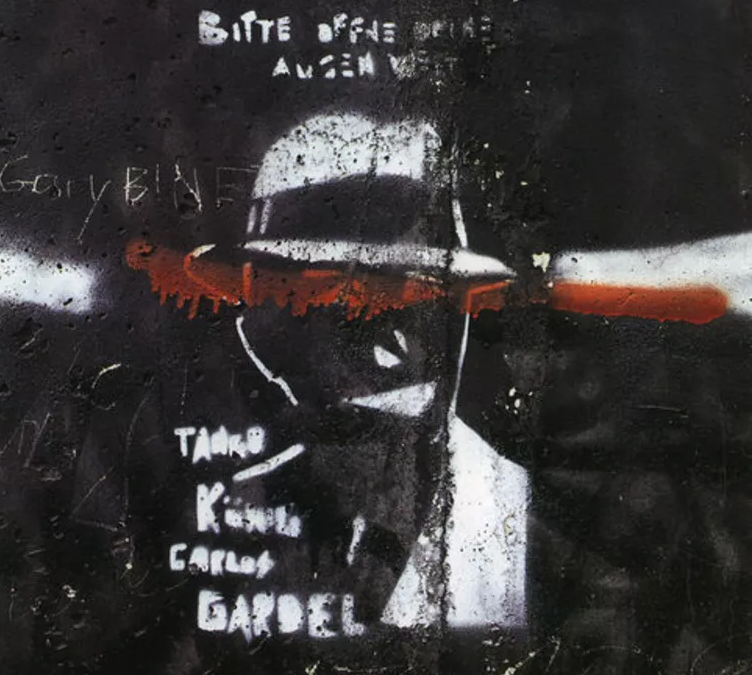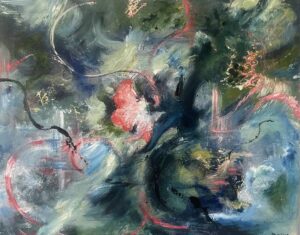Leland Rice’s artwork “Carols Gardel (The Tango King)” (1987-1989) serves as a powerful homage to Carlos Gardel, the legendary Argentine tango singer. Widely regarded as the King of Tango, Gardel’s voice, charisma, and compositions helped define an entire genre, making him one of the most iconic figures in music history.
Through this artwork, Rice captures the essence of Gardel’s legacy, highlighting his international influence and the impression he had on tango music. More than sixty years after his tragic death, Gardel’s music continues to captivate audiences, and his cultural significance remains as strong as ever.
This article explores the life of Carlos Gardel, his contributions to tango music, and how Leland Rice’s artwork beautifully commemorates his enduring legacy.
Carlos Gardel: The King of Tango
To fully appreciate Rice’s tribute, it’s essential to understand the extraordinary life and career of Carlos Gardel. His name is synonymous with tango, a genre that blends music, dance, and poetry into a uniquely expressive art form.
Early Life: A Mysterious Beginning
Carlos Gardel’s origins remain somewhat mysterious. While some believe he was born in Toulouse, France, in 1890, others claim he was born in Uruguay. What is certain is that he was raised in Buenos Aires, Argentina, where he immersed himself in the city’s rich musical culture.
From a young age, Gardel displayed a natural talent for singing, performing in neighborhood bars and theaters. By the early 1910s, he had established himself as a rising star in Argentina’s folk and tango music scene.
The Rise to Fame
Gardel’s breakthrough came in the 1920s, a time when tango was evolving from a dance hall genre into a more sophisticated musical form. His rich baritone voice and emotional delivery resonated with audiences, transforming tango songs into heartfelt ballads.
One of his greatest contributions was the tango canción, a sung version of tango that focused on storytelling and deep emotional expression. This innovation helped elevate tango from an underground dance style to a globally recognized musical genre.
Some of his most famous songs include:
• “Mi Buenos Aires querido” – A nostalgic tribute to the city he loved.
• “El día que me quieras” – A romantic classic still cherished today.
• “Por una cabeza” – One of the most famous tangos ever written, often featured in films like Scent of a Woman and Schindler’s List.
Gardel’s voice was rich, warm, and deeply expressive, making his recordings timeless. His songs captured the emotions of longing, love, and nostalgia, themes that define tango music.
International Stardom and Hollywood Success
Gardel didn’t just conquer Argentina—he became an international superstar. He toured extensively throughout Latin America, Spain, and France, bringing tango to a worldwide audience.
His success in Hollywood further solidified his global appeal. He starred in several films produced by Paramount Pictures, including:
• “Cuesta abajo” (1934)
• “El tango en Broadway” (1934)
• “El día que me quieras” (1935)
These films introduced Gardel’s music to English-speaking audiences and helped him become a cultural ambassador for tango.
Tragic Death and Mythic Legacy
At the height of his fame, tragedy struck. On June 24, 1935, Gardel’s plane crashed in Medellín, Colombia, killing him and his collaborators. His sudden death shocked the world, and mourning fans elevated him to legendary status.
Even today, the phrase “Gardel sings better every day” (Gardel cada día canta mejor) reflects the belief that his music transcends time. His recordings remain widely listened to, and his image has become a symbol of Argentine identity and musical heritage.
Leland Rice’s “Carols Gardel (The Tango King)”: An Artistic Tribute
Leland Rice’s “Carols Gardel (The Tango King)” (1987-1989) pays tribute to the life, music, and impact of Carlos Gardel through visual art. Rice, known for his ability to capture cultural icons in his work, presents Gardel in a way that reflects his timeless influence.
Interpreting the Artwork
Rice’s artwork emphasizes Gardel’s stardom, charisma, and artistic significance. His depiction of Gardel is not just a portrait but a representation of his enduring spirit in the world of tango.
Elements that likely stand out in Rice’s work include:
A Focus on Gardel’s Expression – Capturing the emotion and charm that defined him.
Symbolism of Tango – Integrating imagery related to Buenos Aires, the bandoneón (tango’s signature instrument), or the era’s aesthetics.
A Nostalgic Atmosphere – Using color, composition, or texture to evoke the golden age of tango.
Rice’s approach reflects a deep appreciation for music history, honoring Gardel not just as a musician but as a cultural phenomenon.
The Lasting Impression of Carlos Gardel
Gardel’s influence extends far beyond tango music. His legacy can be seen in:
Music and Film
His recordings remain popular, inspiring new generations of musicians and filmmakers. Modern artists still cover his songs, and tango’s presence in cinema, theater, and dance competitions keeps his spirit alive.
Buenos Aires and Global Recognition
• Buenos Aires is filled with murals, statues, and museums dedicated to Gardel.
• The Carlos Gardel House Museum preserves his personal artifacts, showcasing his contributions to Argentine culture.
• In 2003, UNESCO declared tango as part of the world’s “Intangible Cultural Heritage”, solidifying its importance.
Influence on Contemporary Tango and Latin Music
Tango evolved after Gardel’s death, but his artistic innovations remain a foundation for the genre. Today’s tango musicians, from Astor Piazzolla to modern electronic tango artists, build upon his work.
Why Leland Rice’s Artwork Matters Today
Rice’s “Carols Gardel (The Tango King)” serves as more than just a visual tribute—it is a reminder of the enduring power of music.
Preserving Cultural Icons
Art like Rice’s helps keep historical figures relevant. Many younger generations might not be familiar with Gardel’s legacy, but seeing his image in contemporary art sparks curiosity.
The Intersection of Music and Visual Art
Rice’s piece also highlights the connection between music and visual storytelling. Just as tango expresses emotion through sound, visual art captures the essence of an artist’s life and impact.
Honoring an Unforgettable Voice
Through this work, Rice ensures that Carlos Gardel’s story remains alive, continuing to inspire musicians, artists, and fans worldwide.
Final Note
Leland Rice’s “Carols Gardel (The Tango King)” is more than just an artistic piece—it is a testament to the power of music, culture, and legacy. Carlos Gardel’s voice and spirit continue to resonate across generations, and Rice’s work beautifully captures his immortal presence in the world of tango.
Even nearly a century after his passing, Gardel remains a beacon of Argentine identity, and thanks to artists like Leland Rice, his image and contributions will continue to be celebrated for years to come.
“Carlos Gardel cada día canta mejor.” (Carlos Gardel sings better every day.)
No comments yet.






